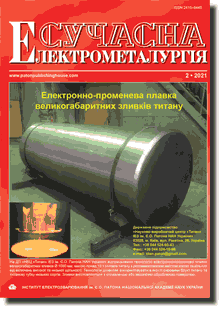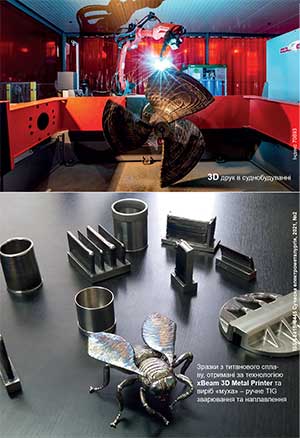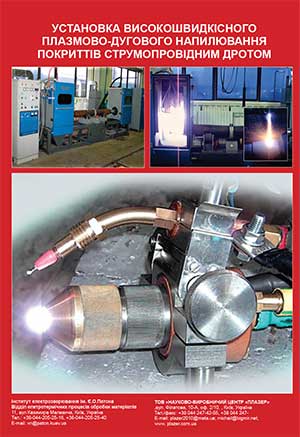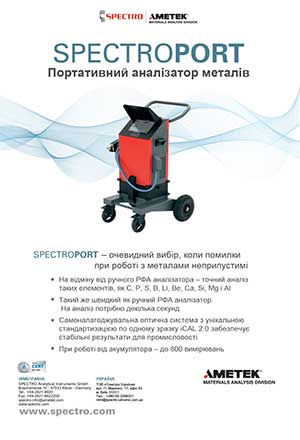| 2021 №02 (06) |
DOI of Article 10.37434/sem2021.02.07 |
2021 №02 (01) |

"Suchasna Elektrometallurgiya" (Electrometallurgy Today), 2021, #2, 47-53 pages
Structural criteria of strength and crack resistance of high-strength steels and their welded joints
O.M. Berdnikova
E.O. Paton Electric Welding Institute of the NAS of Ukraine. 11 Kazymyr Malevych Str., Kyiv, 03150, Ukraine. E-mail: office@paton.kiev.ua
Abstract
Regularities of formation of phase composition, grain, subgrain and dislocation structures at different technological parameters of welding, interrelation of the structure with a set of properties: strength, fracture toughness, level of localized strain and local internal stresses in the metal of high-strength steel welded joints were investigated. Welded joints of high-strength steels, differing by their strength and purpose, namely low-carbon ferritic-bainitic and bainiticmartensitic; high-carbon ferritic-pearlitic; and alloyed medium-carbon martensitic steels, were studied. Experimentalanalytical procedure for evaluation of a complex of physico-mechanical properties of all the structure elements by specific structural parameters was improved, and mathematical processing of the data was introduced. It allowed classifying the cracking conditions with respect to a set of structural components, taking into account the dislocation density and substructure features. Such an experimental-analytical approach to studying the regularities of metal structure impact on its strength, fracture toughness, local internal stresses and localized strain allows evaluation both of the local level of these values, depending on structural factors, and of the general tendency of the change in mechanical properties and crack resistance. Ref. 14, Tabl. 1, Fig. 5.
Keywords: high-strength steels; welded joints; phase composition; microstructure; dislocation density; fracture mode; mechanical properties; crack resistance
Received 08.04.2021
References
1. Poznyakov, V.D., Gaivoronskyi, O.A., Markashova, L.I. (2018) Improvement of technological strength and service properties of welded joints of high-carbon alloyed steels. In: Science on materials, achievements, prospects. Kyiv, Akademperiodyka, 2, 225-239 [in Ukrainian].2. Gorynin, I.V. (1980) Welded hull high-strength steels and their application. In: Modern problems in welding and special electrometallurgy. Kiev, Naukova Dumka, 120-131 [in Russian].
3. Goldshtejn, M.I., Grachev, S.V., Veksler, Yu.G. (1985) Special steels. Moscow, Metallurgiya [in Russian].
4. Haivorons`kyi, О.А., Poznyakov, V.D., Markashova, L.I. et al. (2015) Structural and mechanical properties of the heat-affected zone of restored railway wheels. Fiz.-Khim. Mekh. Mater., 51(4), 114−119. DOI: 10.1007/s11003-016-9876-6. https://doi.org/10.1007/s11003-016-9876-6
5. Ostash, O.P., Andreiko, I.M., Kulyk, V.V. et al. (2009) Influence of the mode of thermal treatment and load ratio on the cyclic crack-growth resistance of wheel steels. Ibid., 45(2), 63-70. https://doi.org/10.1007/s11003-009-9177-4
6. Grabin, V.F. (1982) Metal science of fusion welding. Kiev, Naukova Dumka, 120-131 [in Russian].
7. Markashova, L.I., Poznyakov, V.D., Berdnikova, E.N. et al. (2017) Structure and service properties of welded joints of high-strength steels, aluminium and titanium alloys. The Paton Welding J., 7, 8-18. https://doi.org/10.15407/tpwj2017.07.02
8. Paton, B.E., Grigorenko, G.M., Markashova, L.I. et al. (2018) Structure and large profiled single crystals of tungsten, produced by additive plasma-induction surfacing. Suchasna Elektrometallurgiya, 4, 42-51. https://doi.org/10.15407/sem2018.04.03
9. Markashova, L., Tyurin, Y., Berdnikova, O. (2019) Effect of nano-structured factors on the properties of the coatings produced by detonation spraying method. Lecture Notes in Mechanical Engineering, 109-117. (Springer Nature). https://doi.org/10.1007/978-981-13-6133-3_11
10. Berdnikova, O.M. (2020) Structural criteria of strength and corrosion resistance of welded joints of high-strength steels: Syn. of Thesis for Dr. of Tech. Sci. Degree. Kyiv, PWI [in Ukrainian].
11. Romaniv, O.N. (1979) Fracture toughness of structural steels. Moscow, Metallurgiya [in Russian].
12. Ivanova, V.S., Gordienko, L.K., Geminov, V.N. (1965) Role of dislocations in strengthening and fracture of metals. Moscow, Nauka [in Russian].
13. Farber, V.M., Selivanova, O.V. (2001) Classification of the stress relaxation processes and their manifestation in plastic deformation of metals. Metally, 1, 110-115 [in Russian].
14. Koneva, N.A., Lychagin, D.V., Teplyakova, L.A. et al. (1986) Dislocation-disclination substructures and strengthening. Theoretical and experimental investigation of disclinations. Leningrad, LFTI, 116-126 [in Russian].




